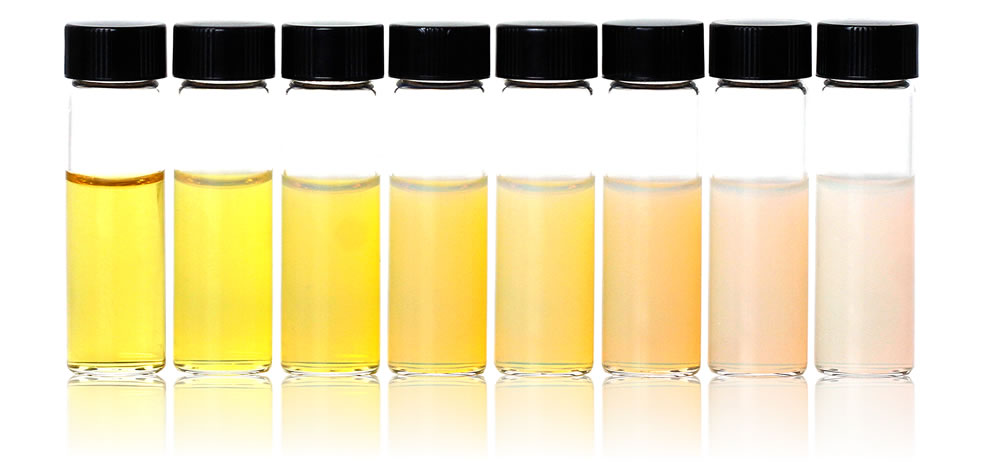Silver Nanoparticles
The shape of silver nanoparticles can be tuned to produce nanospheres, nanoplates, and nanocubes, each with a unique range of different properties that make them suitable in a variety of applications, including diagnostic, nanomedicine, and optical engineering.
At Fortis, we have hundreds of different variants of silver nanoparticles that are available in varying sizes, shapes and surface modifications. We can also produce custom silver nanoparticles to meet your specifications, including custom shelled silver cores, antimicrobial silver nanocomposites, fluorescent particles, and biofunctionalized silver.
Our Silver Nanoparticle Products
View the following silver nanoparticle products that we can offer you:

Colloidal and Dried Silver Nanospheres
Colloidal silver nanospheres and dried silver nanopowders featuring polymer or alkanethiol surface coatings that can be easily redispersed as unagglomerated dispersions in a variety of solvents.

Silver Nanocubes
Silver nanocubes that can be used for a variety of applications including plasmonic sensing, surface enhanced Raman scattering (SERS), metamaterials, catalysis, and bionanotechnology.

Silver Nanoplates
Silver nanoplates that have extremely large absorption and scattering cross-sections in the visible and near-IR (NIR) light spectrum. With adjustable plate diameter and thickness, nanoplate optical resonance can be tuned to peak at specific wavelengths between 500-1300 nm.

Silica Shelled Silver Nanospheres
Silver nanospheres with silica shells for increased stability in a wide range of solvents, available in high concentrations and with versatile conjugation surfaces.
Silver Nanoparticle Applications
Medical Applications
Silver nanopaticles are widely incorporated into wound dressings, and are used as an antiseptic and disinfectant in medical applications and in consumer goods. Silver nanoparticles have a high surface area per unit mass and release a continuous level of silver ions into their environment. The silver ions are bioactive and have broad spectrum antimicrobial properties against a wide range of bacteria. By controlling the size, shape, surface and agglomeration state of the nanoparticles, specific silver ion release profiles can be developed for a given application.
Plasmonics
Silver nanoparticles have unique optical properties because they support surface plasmons. At specific wavelengths of light, the surface plasmons are driven into resonance and strongly absorb or scatter incident light. This effect is so strong that it allows for individual nanoparticles - as small as 20 nm in diameter - to be imaged using a conventional dark field microscope. This strong coupling of metal nanostructures with light is the basis for the new field of plasmonics. Applications of plasmonic silver nanoparticles include biomedical labels, sensors, and detectors. It is also the basis for analysis techniques such as Surface Enhanced Raman Spectroscopy (SERS) and Surface Enhanced Fluorescence Spectroscopy.
Conductive Composites
Incorporation of silver particles into plastics, composites, and adhesives increases the electrical conductivity of the material. Silver pastes and epoxies are widely utilized in the electronics industries. Silver nanoparticle based inks are used to print flexible electronics and have the advantage that the melting point of the small silver nanoparticles in the ink is reduced by hundreds of degrees compared to bulk silver. When scintered, these silver nanoparticle based inks have excellent conductivity.
Photovoltaics
There is increasing interest in utilizing the large scattering and absorption cross sections of plasmonic silver nanoparticles for solar applications. Since the nanoparticles act as efficient optical antennas, very high efficiencies can be obtained when the nanoparticles are incorporated into collectors.
Why Purchase From Fortis Life Sciences?
Satisfaction Guaranteed
We stand behind everything we make 100%. If for any reason you are dissatisfied with the material you’ve received, we will do everything in our power to make it right.
Extensive Characterization Data
Each batch of silver nanoparticles is extensively characterized using techniques including transmission electron microscopy (TEM), dynamic light scattering (DLS), zeta potential, and UV-Visible spectroscopy. In addition to ensuring that every batch of nanoparticles meets our stringent quality control requirements, customers are provided with batch-specific specification sheets containing representative TEM images, sizing data, hydrodynamic diameter measurements, zeta potential analysis, UV-Visible spectrum, and solution pH.
Full Disclosure
Surface chemistry and suspension buffer details are provided for each material, and no proprietary coatings or mystery chemicals are used. Silver nanoparticle products are available with a range of capping agents including citrate, polyvinylpyrrolidone (PVP), silica, and amine-terminated silica.
Aggregation Free
Due to their small size, low mass, and extremely high surface area:volume ratios, once nanoparticles bind together it is often impossible to separate them. Consequently, most dried silver nanopowders that are resuspended consist of clusters of 100's of individual nanoparticles. For many plasmonics and biomedical applications, this agglomeration significantly degrades performance. At Fortis Life Sciences we have developed custom processing techniques that allow us to concentrate and purify nanoparticles without inducing agglomeration. The particles can be transferred into a variety of different solvents to enable their integration into a wide variety of systems. In addition, we have developed a surface stabilization technique that allows us to produce dried gold nanoparticles that can be redispersed into individual, monodisperse nanoparticles.
Customer Service
Our nanoparticle chemists will address your technical questions and help you select the optimal nanomaterial for your application.
By clicking “Acknowledge”, you consent to our website's use of cookies to give you the most relevant experience by remembering your preferences and to analyze our website traffic.


